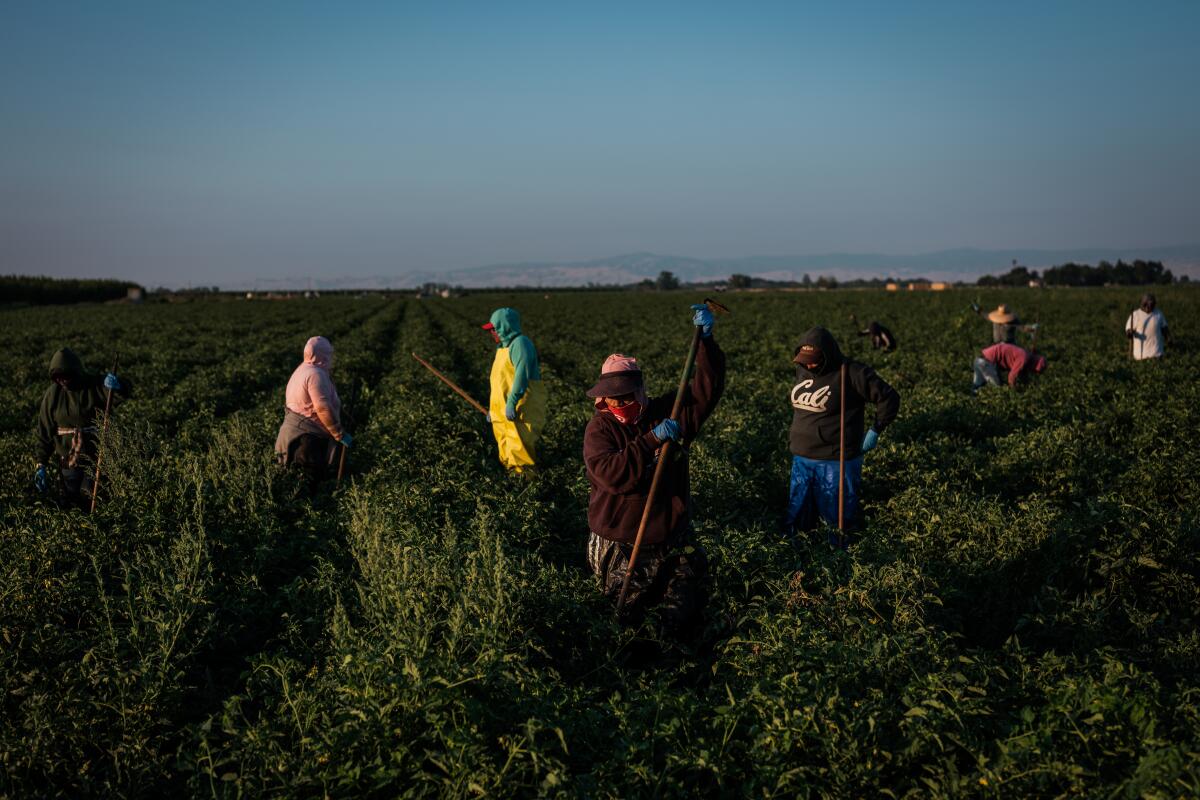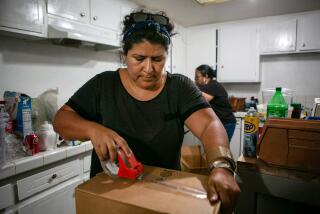Op-Ed: How the pandemic divided California in two

California marked a grim milestone this week, surpassing 11,000 COVID-19 deaths and 600,000 cases. With the coronavirus outbreak still raging in many parts of the state, Gov. Gavin Newsom is toggling between tightening restrictions in some places and rolling them back in others.
California’s plan for reopening businesses and schools, like that of many other states, now depends on using county-specific case counts to determine whether a county has sufficiently controlled the coronavirus spread.
The trouble with this approach is that it hides the reality that the pandemic is playing out as a tale of two Californias. A single county can contain these two Californias in communities just a few miles apart — yet public policy has failed to recognize this difference, with devastating consequences.
In one California, many people have the financial and social resources to protect themselves from exposure to the coronavirus and to weather the economic storm. Although life is disrupted and the future is uncertain, they know few people who have died from COVID-19.
In the second California, grave illness and death from COVID-19 is a relentless daily occurrence, as is a new and growing anxiety about hunger, homelessness and economic devastation.
These two Californias are linked by low-wage essential workers in industries such as agriculture, food services, grocery stores and child and elder care, who risk disease and death to provide the services that all Californians cannot live without.
Those fortunate Californians in the first group ignore the struggles of the second at their peril. To stem the tide of viral transmission and safely reopen important sectors of the economy, we have to put the needs of the most affected Californians first. Our failure to provide and enforce basic workplace and worker protection, particularly for those who fall ill, has negated early efforts to flatten the pandemic’s curve.
Across California and the nation, absence of workplace safeguards has brought the virus home with low-wage workers, whose overcrowded housing creates an environment that promotes transmission to entire households. California’s preexisting crisis of an extreme shortage of housing affordable to low-wage workers has created a pandemic tinderbox.
Latino and Black Californians make up 63% of low-wage workers in the state and have the highest age-adjusted COVID-19 mortality of all Californians, three to four times that of white Californians, with deaths often occurring at young and middle age. Despite this disproportionate toll on nearly half of California’s population, the public health response in neighborhoods where Latino or Black populations live and in counties that are predominantly Latino has been distressingly slow.
To address this inequity we have to change our understanding of the pandemic, and transform the framework of what we measure, how we measure, and how we respond. Counties currently report case counts over the last 14 days, with rates lower than 100 per 100,000 population used as a threshold for reopening schools and various economic sectors. But these are averages that paper over huge disparities between communities with very low viral transmission rates and those with high transmission.
San Francisco exceeds the state’s threshold for reopening, with 175 new cases per 100,000 population, but the rates are tenfold higher in the eastern part of the city in neighborhoods with higher numbers of Latino or Black residents compared with the western part of town. San Francisco’s Latino residents represent only 15% of the city’s population, but account for more than half of its cases. Los Angeles County’s rate is 300 per 100,000, with nearly tenfold differences in rates between the cities of El Monte, which is 69% Latino, and Santa Monica, which is 13% Latino.
Focusing solely on averages risks imposing equivalency in the public health response at a time when more is actually needed in communities with higher transmission: more testing, more tracing, more support for isolation. And tying the average to reopening may actually discourage more case-finding in poorer communities where low-wage workers reside.
Counties can and should report on specific neighborhoods and demographic groups with the highest transmission over the last 14 days, and be held accountable for lowering these trends over time. This is the only way to ensure resources are directed to communities in vital need.
Developing meaningful measurements requires that testing be universally available. The persistent evidence of under-testing in communities with the highest transmission is particularly perverse. And metrics such as average numbers of tests per day or average positivity rates are meaningless if they represent enhanced access and higher testing (and retesting) rates in communities with the lowest transmission.
We need increased availability and lower barriers to testing in all of our communities, but especially in those with the highest need and fewest resources. That means testing that doesn’t require an email address, broadband access, a car, insurance or a trip across town. Robust testing must be followed by effective case investigation and contact tracing, ideally performed by a public health workforce hired from the affected communities. This helps build the trust that is required for success.
We need more workplace protections for essential workers, including adequate personal protective equipment provided by employers, increased occupational studies and surveillance, and strict enforcement of health orders to minimize occupational exposures. We also need to provide job protection and financial support that allow sick workers to isolate and quarantine without losing wages, as is being tried in some counties across California, including most recently in hard-hit Alameda County. We need to provide temporary housing, such as hotel rooms where infected people can isolate to protect others in their household from the virus.
We cannot afford to avert our gaze by using metrics that conceal the deep suffering of low-income neighborhoods and counties across our state. Our two Californias are entwined and we have to face our twin health and economic crises together.
Kirsten Bibbins-Domingo is professor and chair of the department of epidemiology and biostatistics and vice dean of population health and health equity at UC San Francisco. Margot Kushel is professor of medicine and the current director of the UC San Francisco Center for Vulnerable Populations.
More to Read
A cure for the common opinion
Get thought-provoking perspectives with our weekly newsletter.
You may occasionally receive promotional content from the Los Angeles Times.






